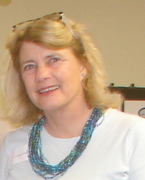Just as enthusiasm for breast augmentation via fat transfer has begun to pick up speed, news from the American Society of Plastic Surgeons suggested that renewed caution is in order.
Last month, a team of researchers at a Beijing hospital, led by Dr. Cong-Feng Wang, published a study in the ASPS journal, Plastic and Reconstructive Surgery®, of 48 women who had undergone fat transfer to the breasts. Of the group of patients, six were found to have irregularities in their breast tissue in follow up mammograms. What’s more, in every one of the cases the abnormalities were judged to be “highly suspicious” of breast cancer. Noting the alarming rate of incidence of what they call “mammographic confusion,” Wang and his team called for the procedure to be banned (ASPS1).
The good news is that none of the six women was found to actually have a tumor. Instead, the irregular tissue proved to be microcalcifications related to fat cell necrosis, or death (ASPS1).
The bad news is that the study seems to point to a double-whammy regarding fat transfer to the breasts. Not only is some of the fat not surviving for some patients, reducing the augmentation effect they were seeking, the likelihood of false positive breast cancer tests is high. Women then need further procedures to get to the bottom of the irregularity in breast tissue, causing increased hassle, worry and expense.
This news from the ASPS is somewhat ironic. A couple of decades ago, the group voiced strong objections to the fat transfer procedure, based on the possibility of interference with breast cancer diagnoses (ASPS1). Then, more recent studies caused the ASPS to moderate that stance, citing a French study that showed that fat transfer did not pose a problem with cancer screening. In fact, the organization issued a press release just several weeks ago noting that even while some women develop calcifications in their breast tissue after fat transfer, these would not normally mimic breast cancer (ASPS2). Now, the ASPS is calling for more research.
What does all this mean to you? If you’ve been considering fat transfer to augment your buttocks or face, or you want to have liposuction to move fat from one area to another to correct a body contour issue, you may want to go ahead. So far there has been no indication that microcalcifications due to fat cell death pose problems for patients who choose these procedures. But think carefully before you proceed with fat transfer to the breasts.
No matter which fat transfer procedure you might be thinking about, consult a board certified plastic surgeon who is an expert with fat transfer and who stays current on the topic. And if you’re at all risk-averse, wait and stay tuned for more news.
Resources:
“Calcifications at Follow-Up Are Indistinguishable from Breast Cancer, New Study Reports.” American Society of Plastic Surgeons. Web. April 28, 2011.
http://www.plasticsurgery.org/News-and-Resources/Breast-Fat-Injection-Causes-Confusion-on-Mammograms.html
American Society of Plastic Surgeons. Web. April 28, 2011.
http://www.plasticsurgery.org/News-and-Resources/Breast-Lipomodeling-Doesnt-Interfere-with-Mammograms-.html






Add a CommentComments
There are no comments yet. Be the first one and get the conversation started!